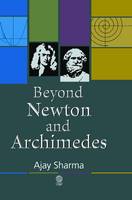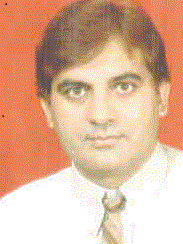Beyond Newton and Archimedes Publisher: Cambridge International Science Publishing, Cambridge England, Oct. 2013
The spiritualism becomes science if testable. Science becomes superstition if un-testable.
http://www.amazon.com/Beyond-Newton-Archimedes-Ajay-Sharma/dp/1907343938
Chapters of ‘Beyond Newton and Archimedes
1. 2360 Years Old Aristotle's Assertion Revalidated by Stokes Law
2. Construction of Water, Glycerine
and Ethyl Alcohol Barometers
3. Archimedes Principle: The Oldest Established Law
4. The Generalized Form of Archimedes Principle
5. Prediction of Indeterminate Form Of Volume From
6. Archimedes Principle Is Stokes Law Applicable for Rising Bodies?
7. Limitation of Existing Theories and an Alternate Theory of Rising, Falling and Floating Bodies
8. Route to Newton's Laws of Motion
9. Experimental Confirmations of Equations of Conservation Laws in Elastic Collisions
10. Elastic Collisions in One Dimension and Newton's Third Law of Motion
Back cover of Beyond Newton and Archimedes
· Newton’s second law of motion, F = ma was not derived by Newton. It is clear from the Principia. Euler gave in 1775 in research article. It is available at website of Mathematical Association of America. However, the first and third laws, as we teach now, were given by Newton.
· The mathematical equations, based upon the Archimedes principle, became feasible after 1937 years of enunciation of the principle. How did scientists take the principle granted for so many years without equations? Newton defined g (acceleration due to gravity) in 1687.
· When mathematically analyzed, the 2265 years old Archimedes principle predicts that, under certain feasible conditions, the volume of the medium filling a balloon becomes undefined, i.e. V = 0/0 (meaningless).
· When the Archimedes principle is generalized, then the exact volume, i.e. V = V is obtained.
· Further, the Archimedes principle does not account for the shape of the body, the viscosity of the medium, etc., these factors can be taken in account by the generalized principle. The generalization can be experimentally confirmed by sensitive experiments.
· R Piazza reported anomalous observations to the Archimedes principle in sensitive experiments, i.e. heavy particles of gold floated over the surface of a lighter medium.
· Aristotle’s assertion about falling bodies (i.e. a heavier body falls more quickly than a lighter one) is even now true under the conditions, Stokes law holds good (in fluids).
· In the existing literature, there is no theory which explains the distance travelled (fallen or arisen) by bodies of different magnitudes (1 mgm or less and 10 kg or more ) of different shapes ( spherical or distorted) in time t (say 1s) in various fluids. Consequently a generalized theory of rising, falling and floating bodies is formulated for the first time.
· The Italian scientist Evangelista Torricelli constructed a mercury barometer in 1644, but even after 369 years no water barometer has been constructed. It would require a tube 10.3 m long and experiments may be revolutionary in many respects.
www.AjayOnLine.us Email ajay.pqrs@gmail.com Mobile 0091 94184 50899



